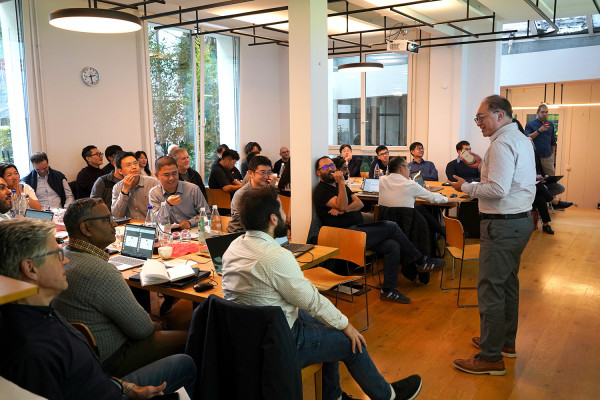ZMT and SPEAG Annual Strategic Sales Meeting 2025
From December 8 – 12, 2025, ZMT and Z43 partner Schmid & Partner Engineering AG (SPEAG) together hosted our Annual Strategic Sales Meeting at our headquarters in Zurich, bringing together our regional sales teams, sales agents, and representatives from around the world to share insights, strategize, and align for future growth.

This year’s theme was success stories, with each agent and representative, as well as Z43 members, sharing examples of how a customer need was met by a hardware, software, support, or service solution – often a combination thereof. A frequent theme was the complexity of the customer’s challenges, with many technical, production or regulatory goals requiring extensions of current methodologies or even novel solutions. ZMT and SPEAG are uniquely capable of meeting these needs with their focus on cutting-edge hardware and software tools, backed by the latest research and regulatory science. These stories also highlighted that customers become confident in using these powerful tools correctly thanks to the strong scientific and technical support offered with our products. Lost opportunities were also discussed with an eye towards continuous improvement of both products and sales, and the product roadmaps for 2026 were presented by Z43’s product heads.
On Monday evening, the guests enjoyed a seasonal traditional fondue dinner under a transparent globe overlooking the Zurich Opera House, the city lights, and the nearby Christmas market. They were then surprised by a rare private performance from a traditional Zäuerli group from the Kanton Appenzell Ausserrhoden, who scare away bad spirits with their bells and bring good cheer with their traditional distinctive style of ‘natural’ yodeling. Check out the video here!

A big thank you to everyone involved for a very productive week!




